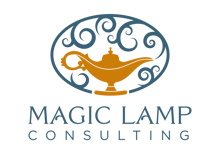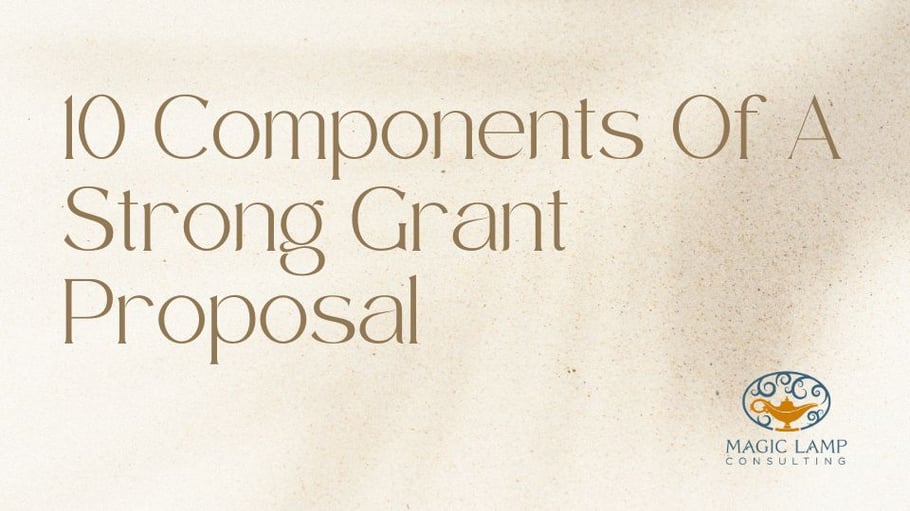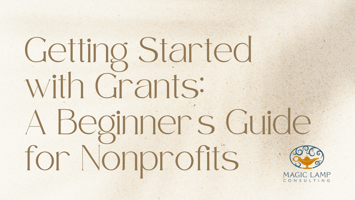Nonprofits play a pivotal role in addressing societal challenges and making a positive impact in...
10 Components of a Strong Grant Proposal
Applying for grant funding can be a competitive and complex process, but many nonprofit organizations need to secure the resources they need to carry out their mission. A grant proposal is the organization's opportunity to showcase its work, its goals, and its vision for the future, and to make a compelling case for why the funding organization should invest in its project. To be successful, a grant proposal must provide the information that the funding organization needs to make an informed decision about the grant request. This information must be clear, concise, and compelling, and it must demonstrate the organization's commitment to achieving its goals and making a positive impact on the community it serves. In this blog, we will explore the key components of a strong grant proposal and provide tips for making sure that your proposal stands out from the rest.
In conclusion, when submitting a proposal, it is essential to remember that the funding organization will be evaluating the proposal based on its ability to meet the organization's funding priorities, its alignment with the organization's mission, and the capacity of the organization to carry out the project successfully. By focusing on these key components, you will increase the chances of securing funding to support your important work.
- Executive Summary: An executive summary should be included at the beginning of the proposal. The purpose is to give the funding organization a high-level overview that is a quick and comprehensive understanding of the proposal without having to read the entire document. It should be written clearly and concisely, using language that is easy to understand and avoiding technical jargon.
- Needs Statement: The foundation of any grant proposal is a clear and compelling description of the problem or need that your organization aims to address. This section should provide background information, data and statistics, and a clear explanation of why this issue is important and why your organization is well-positioned to address it.
- Project Goals: The next component is a description of the specific goals of the project. Goals are broad statements, clearly articulated, that define what you hope to accomplish.
- Project Objectives/Methods and Implementation Plan: In contrast to the goal, an objective is narrow, precise, tangible, concrete and can be measured. Explain how you plan to achieve your project goals using the S.M.A.R.T method; Specific, Measurable, Attainable, Realistic, and Time-Bound. This should include a detailed description of the activities that will be undertaken, as well as a timeline for when they will be completed.
- Outcomes Measures: Outcome measures are the results, or impact that you want the program or project to make, which ties back to the stated Goals and Objectives.
- Evaluation Method: This section should discuss how you will track, collect, and analyze outcomes and progress toward achieving your goals, using quantitative (data, numbers, measurements, statistics) and qualitative (characteristics, senses, intangibles, subjective) approaches.
- Project Budget and Budget Explanation: A strong grant proposal includes a detailed budget outlining all the costs associated with your project, as well as a specific funding request. This section should be well-researched and include a clear explanation of why the requested funding is necessary to carry out your project and a breakdown of how the funding will be utilized.
- Project Sustainability: Funders want to understand how your organization plans to sustain the project once funding has been secured. This could include plans for securing additional funding, developing partnerships, or building capacity within the organization to ensure the long-term success of the project.
- Organizational Background and Capacity: Finally, a strong grant proposal should include a description of your organization and its capacity to carry out the proposed project. This should include information on your organization's mission, history, and track record, as well as a discussion of the skills and experience of your staff and board.
- Supporting Materials: Some funders provide an opportunity to include supporting materials allowing applicants to include additional details or context about the proposal. This could include things like a resume of key staff members, letters of support from partners and stakeholders, data and research that supports the need for the project, articles or publications highlighting the nonprofit and any other relevant materials that help to demonstrate the feasibility and impact of the proposal.
In conclusion, when submitting a proposal, it is essential to remember that the funding organization will be evaluating the proposal based on its ability to meet the organization's funding priorities, its alignment with the organization's mission, and the capacity of the organization to carry out the project successfully. By focusing on these key components, you will increase the chances of securing funding to support your important work.





